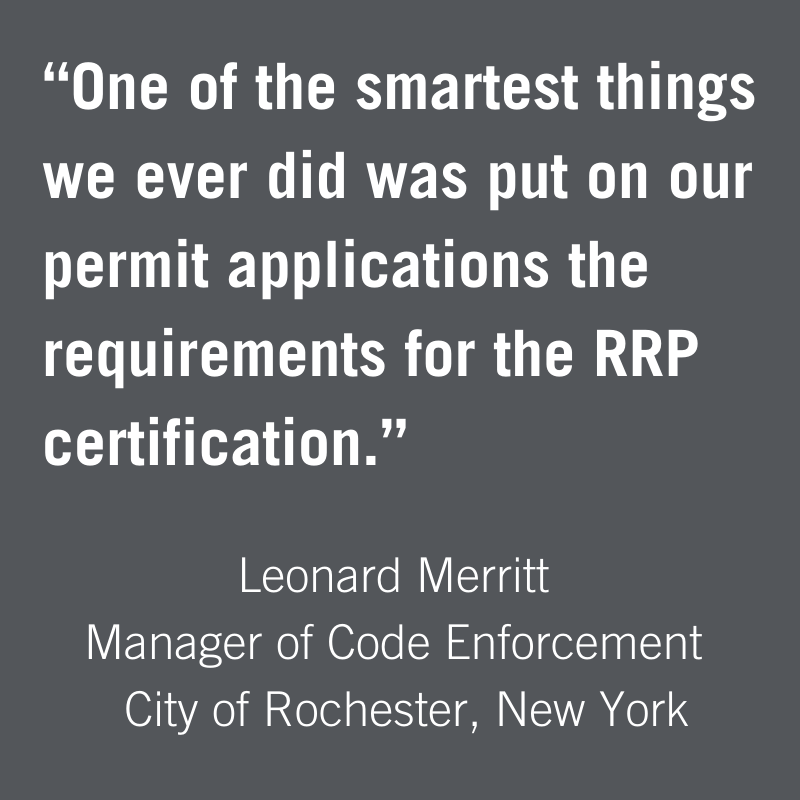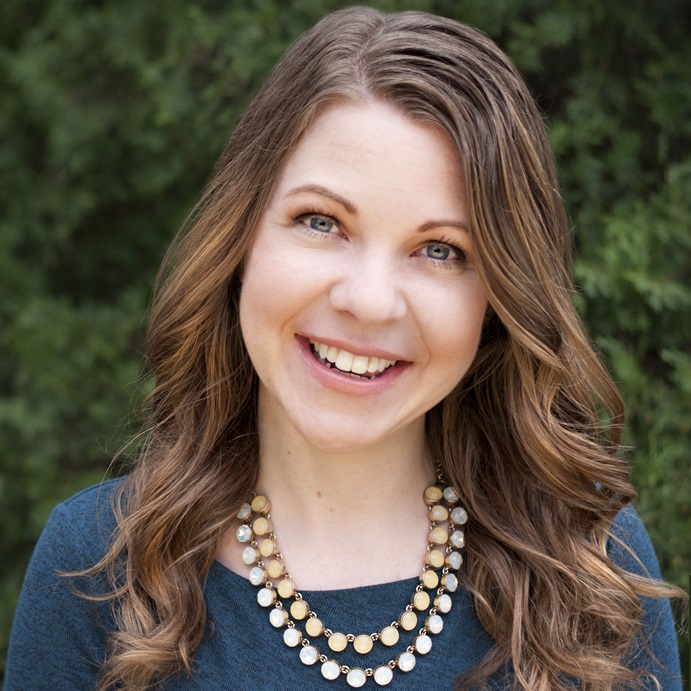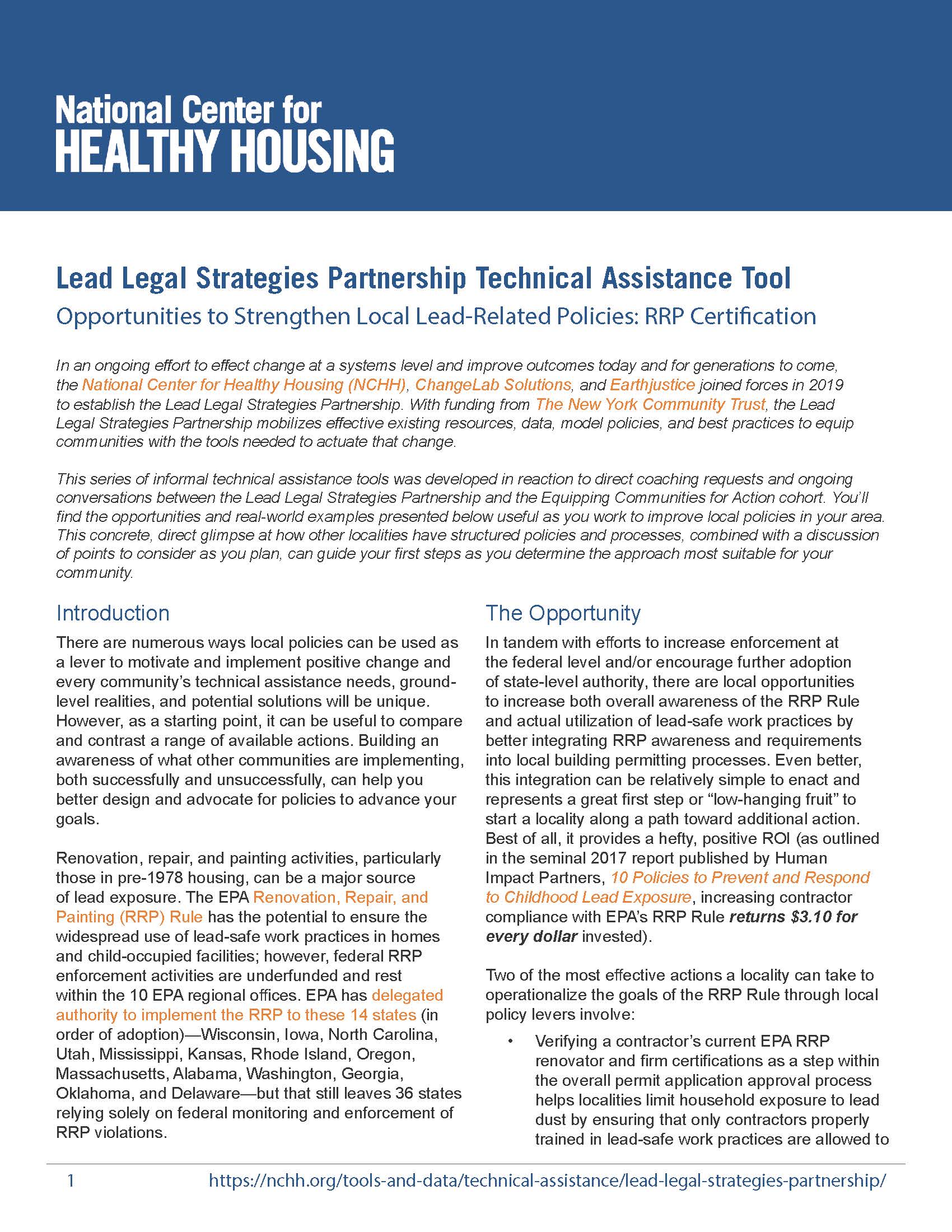How Municipalities Can Leverage RRP Requirements to Advance Lead Poisoning Prevention
by Amanda Reddy, Executive Director
Home improvement spending has been on the rise for years, but it has surged during the COVID-19 pandemic as people are spending more time at home. This likely includes many older homes where some worry that children’s exposure to lead may also be on the rise due to both the increased amount of time spent inside and also the potential for increased lead hazards resulting from all that home improvement.
Cities have an important role to play in encouraging property owners to renovate safely through RRP requirements. As we covered in an earlier blog, the Environmental Protection Agency’s (EPA) Renovation, Repair, and Painting (RRP) Rule requires that firms performing renovation, repair, and painting projects that disturb lead-based paint in homes, child care facilities, and preschools built before 1978 be certified by EPA (or an authorized state), use certified renovators who are trained by EPA-approved training providers, and follow lead-safe work practices.
RRP permitting isn’t a substitute for other local policies and programs, but it is a common-sense complement to the work you’re likely already doing. Nationally, a study funded by the Robert Wood Johnson Foundation found that there was an economic benefit of $3.10 for every dollar invested in RRP enforcement (you can find state-specific numbers here). Those benefits and the responsibilities associated with them are shared across different levels of government. One common misconception about RRP is that because it is a federal program in states that haven’t chosen to administer their own program, there isn’t any action needed at the state or local level. But there is a critical role for cities to play: Adapting your permitting process is a relatively straightforward way to help remind contractors about their responsibilities. This can be as simple as adding a checkbox asking property owners or contractors to confirm their commitment to following RRP requirements for lead-safe renovations to actually requiring contractors to report their RRP license numbers or share a copy of their certification, and we we can share many examples from cities across the country as you explore what’s best for your community. But first, read on to learn why adding RRP to your local permitting process makes sense.
Why Adding RRP Makes Sense
There are many benefits to including RRP in your permitting process.
- First, adding an acknowledgement or verification of RRP to your local permitting process doesn’t add requirements or increase any obligations for contractors. They’re already required to comply with RRP, regardless of whether those words appear on your local permit applications or not.
- Adding RRP to your permitting process really serves to remind contractors of this obligation and level the playing field so that all contractors are held to the same expectations. Without it, contractors who want to do the right thing by complying may be at a disadvantage. The costs associated with RRP compliance (to cover additional supplies and training for firms and contractors) are modest but can increase the cost of a job (EPA estimates that the average absolute costs to comply with the rule range from $35 to $376, but since many contractors already comply with parts of the rule, the incremental costs are likely $8-$124). It can be especially effective to partner with community groups to offer free or subsidized RRP classes for contractors and homeowners to reduce the possibility that cost is a barrier to complying.
- An explicit requirement also empowers residents. Having a checkbox on a form gives residents a chance to learn that contractors are supposed to be following lead-safe work practices so that they can ask questions and make sure their family is adequately protected.
- It’s also worth noting that RRP protects the workers and their families too from unnecessary lead exposure (both on the job and on the clothes and equipment that they take home each night).
- If your community is newer to lead poisoning prevention, adding RRP to your local permitting process is a great way to get started (especially since, as noted above, it doesn’t actually increase requirements for contractors). However, it also makes sense for communities with well-established lead poisoning prevention programs and usually complements these existing efforts. For good reasons, many lead programs target lower-income households with known lead hazards and code-enforcement programs often focus on rental properties. RRP applies to all pre-1978 housing, and the rule protects residents and workers from lead exposure even when the project has nothing to do with lead at all, as is true of most home improvement projects.
- Speaking of home improvement, painting is one of the most common home improvement projects and as home ownership grows among millennials, more and more of these projects may be focused on renovations for expectant families. Ensuring lead-safe work practices are followed is especially important during pregnancy and in the first few years of a child’s life, and adding RRP to your local permitting process is a great way to educate a first-time homeowner about how they can protect their families.
- Finally, many other communities have paved the way, so you don’t have to reinvent the wheel.
We Can Get You Started
NCHH has several great resources to help you add RRP to your local permitting process. And if your community’s process already includes RRP, it’s worth checking out our these resources for opportunities to make it even more effective:
- Example forms used by other communities,
- Technical briefs that outline what you should consider in designing your own permitting process,
- Examples of how to create effective programs that help contractors and property owners want to comply, and
- Individual coaching to for communities that want a little extra assistance in setting up their permitting process or who are struggling with implementation challenges.
So, whether you’re new to lead poisoning prevention work or already have a robust lead program in place, adding RRP to your local permitting process should be an important part of your activities to protect children from unnecessary lead exposure. I’ll conclude by sharing that it’s no accident that Leonard Merritt, Manager of Code Enforcement for the City of Rochester, recently said at a public meeting, “One of the smartest things we ever did was put on our permit applications the requirements for the RRP certification.” Rochester is recognized nationally as a pioneer in lead poisoning prevention policy at the local level; and over the years, many municipalities have expressed a desire to emulate their program. Why not start with RRP?
Related Resources
Local Policy Toolbox
This collection of resources, developed by the Lead Legal Strategies Partnership (NCHH, ChangeLab Solutions, and Earthjustice), demonstrate how other localities have structured policies and processes, which can inspire considering possibilities to develop and promote your own local policy improvements. Think of these resources as a do-it-yourself kit that will help you channel existing expertise and guidance as you consider and analyze your own unique opportunities. [url: LLSP, 2019]
 Amanda Reddy, MS, Executive Director of the National Center for Healthy Housing, has advanced numerous initiatives, including those related to healthcare financing of healthy homes services, training and technical assistance to support the launch and growth of sustainable healthy homes programs, and the development of indicators for the HUD Healthy Communities Index. Prior to NCHH, Ms. Reddy was a research scientist with the New York State Department of Health, where she provided program evaluation, management, and technical support for the Asthma Control, Healthy Homes and Lead Poisoning Primary Prevention, Healthy Neighborhoods, and Healthy Home Environments for New Yorkers with Asthma programs. Ms. Reddy holds an MS in environmental health from the London School of Hygiene and Tropical Medicine and a BA in neuroscience from Mount Holyoke College.
Amanda Reddy, MS, Executive Director of the National Center for Healthy Housing, has advanced numerous initiatives, including those related to healthcare financing of healthy homes services, training and technical assistance to support the launch and growth of sustainable healthy homes programs, and the development of indicators for the HUD Healthy Communities Index. Prior to NCHH, Ms. Reddy was a research scientist with the New York State Department of Health, where she provided program evaluation, management, and technical support for the Asthma Control, Healthy Homes and Lead Poisoning Primary Prevention, Healthy Neighborhoods, and Healthy Home Environments for New Yorkers with Asthma programs. Ms. Reddy holds an MS in environmental health from the London School of Hygiene and Tropical Medicine and a BA in neuroscience from Mount Holyoke College.

